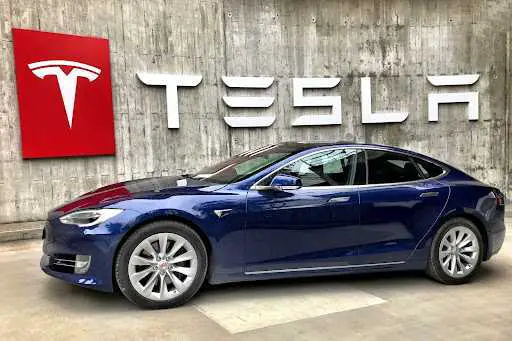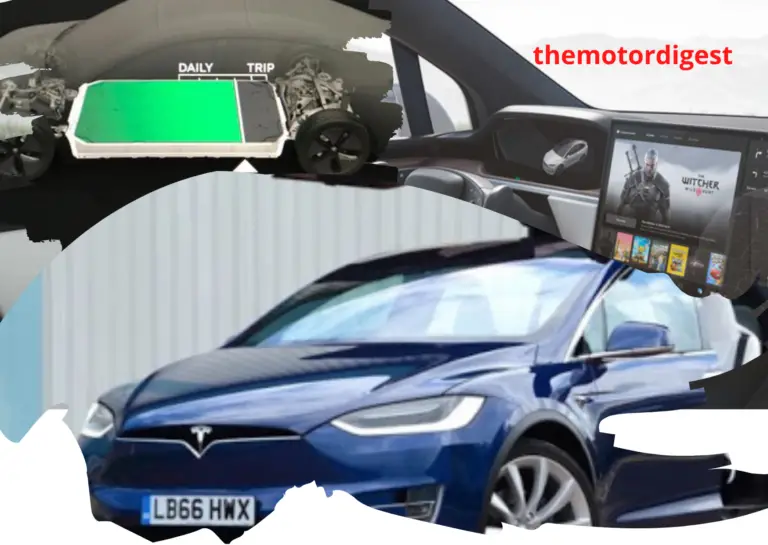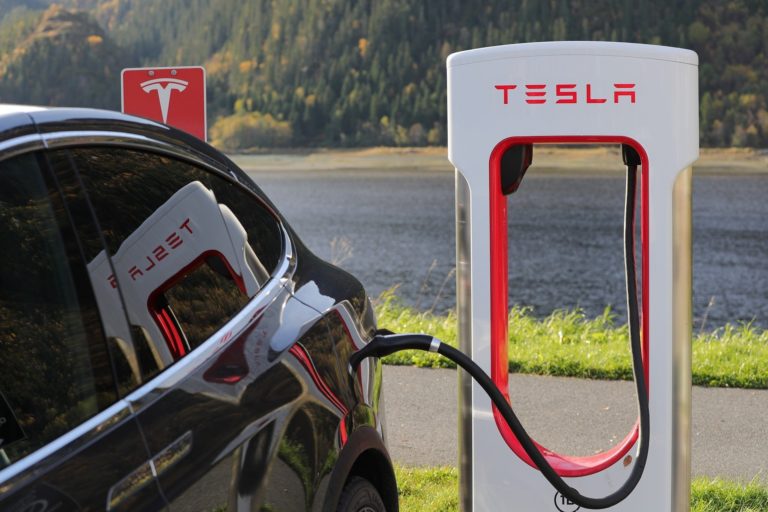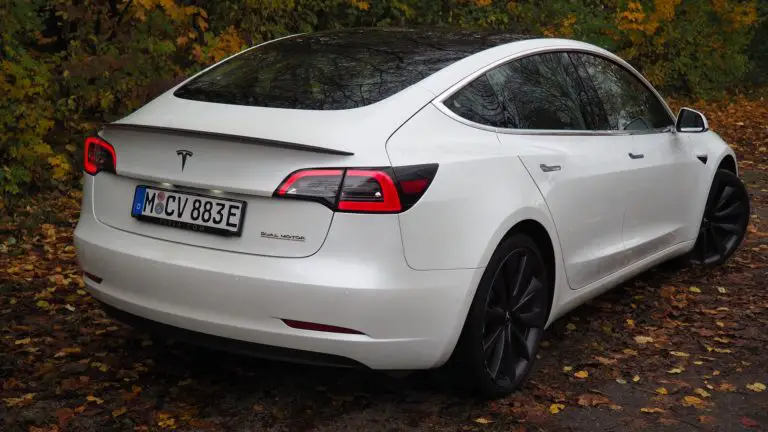Do You Change the Oil in a Tesla Car?
For all of us who once were (or still are) driving combustion engine cars, changing the engine’s oil is one of the most common components of maintaining a car. But now, with the emergence of electric cars like Tesla that don’t have engines, we’re confused about whether to change the car’s oil or not.
You don’t need to change the oil in a Tesla car because it doesn’t have an engine and thus lacks traditional engine oil. Tesla’s electric motor contains grease that doesn’t degrade much over time. It also has some lubricating oil in the gearbox (differential) that usually doesn’t need changing.
In the remainder of this article, we’ll tell you whether you have to change a Tesla’s oil and also take a look at other fluids in a Tesla car. We’ll also help you learn how to maintain your Tesla and keep it in good shape.
Table of Contents
- Does Tesla Have Oil?
- Tesla’s Fluids and Lubricants
- How Often You Should Change a Tesla’s Oil
- Helpful Tips for Maintaining a Tesla
- Bottom Line
Does Tesla Have Oil?
Teslas are electric cars, meaning they have electric motors instead of the regular combustion engines. As a result, they don’t have an oiling system like what we’re accustomed to seeing in regular cars. However, its motor and other moving parts require proper lubrication to function smoothly.
The Tesla company once stated that its Model S is like a mobile app on wheels, and that’s not a metaphor. Tesla aims to eliminate the need to visit the dealer service departments, and one of its main promises is to get rid of oil changes as an old-fashioned mechanism – which car dealers don’t welcome.
But why doesn’t a Tesla need oil changes? To understand it better, we have to see why normal cars need engine oil and why it needs regular change.
We use engine oil in regular internal combustion engines (ICE) to ensure that the motor is running smoothly. After a period, combustion byproducts such as soot and acids contaminate and break down the engine oil. So, we must change it regularly with clean oil to prevent malfunctions.
On the other hand, Tesla electric cars run on electric motors, which are quite different than combustion engines and don’t have many moving parts like pistons. They also lack air filters, spark plugs, timing belts, or fuel pumps.
So, just a small amount of grease is enough to keep the motor functioning smoothly. What’s more, you don’t need to change this grease because it won’t degrade. That’s why a Tesla doesn’t require oil in its conventional sense.
But that’s not the end of it. While Tesla’s electric motor doesn’t need oil and just uses a small amount of grease for lubrication, other moving parts of the car require oil for smooth function.
For example, the differential (or gearbox) comes with some oil inside to ensure smooth transmission. However, this oil is different from engine oil because there’s no fuel burning to produce fumes and contaminate it – the primary reason for changing the oil in combustion engines.
Initially, the company recommended changing this gearbox oil during your service in year 1, year 5, year 9, but in the new Tesla guidance, this changing recommendation is removed, and it’s thought that gearbox oil will last during the lifespan of the car.
Tesla’s Fluids and Lubricants
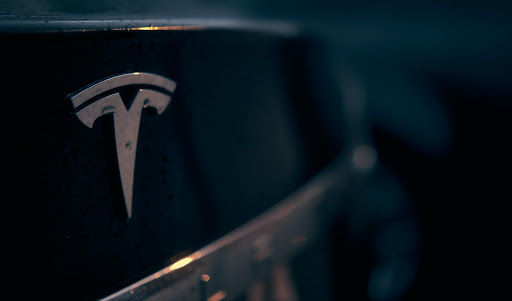
Generally, the maintenance of electric vehicles like Teslas is much easier and cheaper than their regular gas-fueled counterparts. And although Tesla doesn’t have a conventional oil engine, that doesn’t mean it won’t need other fluids for its proper functioning.
Tesla cars still need lubrication to reduce the metal-on-metal friction as much as possible. For example, as we said before, they have oil in their gearbox, which is also a coolant that eliminates the heat produced by friction.
Other than that, there’s also some grease in Tesla’s electric motor to lubricate its moving parts. However, its motor still has several moving parts (much fewer than internal combustion engines, estimated between 17 to 20) required to be appropriately lubricated. And that’s one of the reasons their maintenance is so low-cost and easy.
Besides the internal parts of a Tesla, its external parts also need lubrication. For example, their doors, windows, handles, latches, trunk hinges, and seat slides require a typical lubricant – commonly lithium greases – like the regular cars.
In addition to all mentioned above, electric cars like Teslas need e-fluids, too. These fluids are divided into three types:
- E-transmission fluids specific to plug-in hybrids (PHEVs), battery electric vehicles (BEVs), and fuel cell EVs (FCEVs).
- E-greases to decrease the noise, vibration, and harshness (NVH).
- E-thermal fluids.
Tesla cars have fluids like coolants, A/C refrigerant, and brake fluid. All of these fluids are well-sealed, and you can’t access them easily – and there’s no need to because they’ll usually last for a lifetime.
This might seem odd, but Tesla also has a regular 12V battery in case of emergencies. This battery contains acid, but it’s also sealed and out of your reach.
However, Tesla cars lack some common fluids found in regular cars. For example, they don’t have engine oil, radiator water, transmission oil, antifreeze, and of course, fuel.
How Often You Should Change a Tesla’s Oil
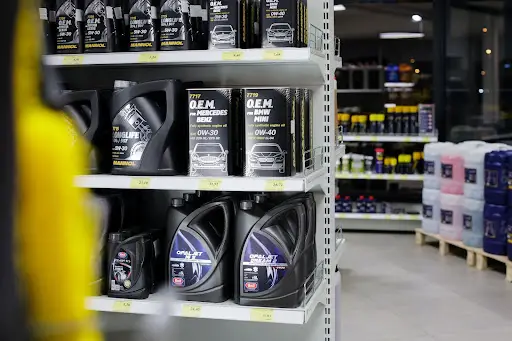
Since Teslas don’t have engine oil, you don’t need to regularly visit the car service department for changing oil, saving a significant amount of time and energy. And other fluids such as lubricants and oil are well-sealed because they’ll usually last for the car’s lifespan.
Although Tesla recommends you go for an examination once a year or every 12,500 miles, you can check for the lubrication oil change in a more extended period. According to the Tesla service centers, it’s better to change the lubrication oil of your car’s drive unit after every 100,000 miles in Model S and Model X.
The Model 3 Tesla usually has a replaceable external oil filter that prevents oil contamination and enhances its lifespan. So, you may not need to visit a service department ever due to such low maintenance.
According to Tesla, the charging hatch motor, washer fluid pump, cooling system pump, windshield wiper motors, and interior fan motor are all lubricated for life – meaning they don’t need to be changed.
However, a good rule of thumb for changing its gearbox oil is to watch out how much oil comes out of your car when you’re draining it and then add the same amount of oil to it.
Helpful Tips for Maintaining a Tesla
In this section, we’ll go through some general tips to help you better maintain your Tesla car. However, for specific guidance and details for your vehicle, we recommend reading the Tesla owner’s manual first.
Tires
Tesla’s tires are just like those in regular cars, and they’ll wear over time due to their constant contact with the ground. While the company suggests you change them approximately every 6 years, it can become sooner or later depending on some factors. For example, how much you drive, your speed, weather conditions, road conditions, UV light, etc.
You should also check your Tesla tires for rotation and misalignment every 10,000-12,000 miles because it can affect the handling.
Brake Pads
In electric cars like Tesla, brake pads usually have a much longer lifespan than regular cars due to minor wear and tear. They use regenerative braking systems which return the energy to the battery and prevent wear and tear on the brakes. However, it’s good to check the braking pads while you go for a service.
Carbon Air & HEPA Filter
Replacing the carbon air filter every 2 years is another good maintenance recommendation. Because it can get clogged up by dust or pollen and lose its efficiency, it may need changing. You should also change the HEPA filter every 3 years.
Brake Fluid Contamination
After an extended period, brake fluids may become contaminated and need to be replaced; otherwise, they won’t be effective anymore. According to the company, you should check on the brake fluids every 2 years. You can do it during your routine Tesla service.
Air Conditioning
Tesla’s air conditioning unit requires service to remain efficient and function properly. However, its maintenance varies by model. Take a look at this guide to know how often you should service your AC.
Tesla Model Air Conditioning Service
Model S Every 2 years
Model X Every 4 years
Model 3 Every 6 years
Brake Calipers
In case you live in some cold regions or frequently drive your Tesla in cold weather, it’s recommended to clean up and lubricate the brake calipers every 12 months or 12,500 miles.
Here’s a quick checklist to know how often you have to check each of the above items (It’sbased on Tesla’s official guidance, which can vary at any time, so verify them first).
Maintenance Item Time Interval
Tires 6 years (wear),10-12K miles (alignment)
Brake pads Rarely, you shouldn’t need to
Filters 2 years (carbon air filter), 3 years (HEPA)
Brake fluid 2 years
Air conditioning Model S (2 years), Model X (4 years), Model 3 (6 years)
Bottom Line
If you have a Tesla or aim to buy one, you can lay back and be sure that you won’t need to change its oil regularly like regular cars. Tesla’s don’t have engines, and therefore there’s no engine oil at all.
However, its motor has some grease and the gearbox contains lubricating oil, which doesn’t need to be changed. You just have to check on your Tesla’s fluids on routine services and change or refill the required fluids.
Amazon and the Amazon logo are trademarks of Amazon.com, Inc, or its affiliates.



